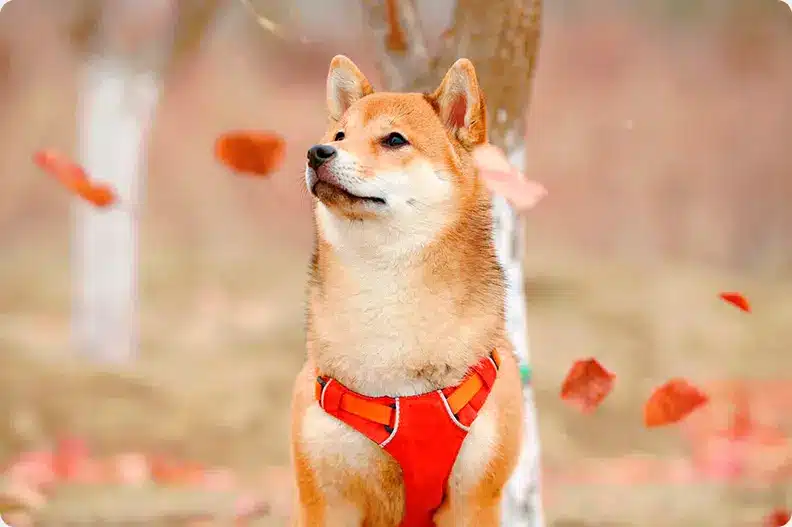Share
Shiba Inu Breeding
The Shiba Inu is one of the most popular Japanese dog breeds. This breed of dog is small in size compared to other dog breeds. Its name also indicates its size since ‘Shiba’ means ‘small’ and ‘Inu’ means dog. They are considered a precious breed of dog in Japan. They were bred in the mountainous region of Japan as hunting dogs and are still used to navigate the terrain as alert dogs.
They are also one of the oldest dog breeds in Japan. They are often mistaken for foxes due to their reddish-brown fur. Their outstanding intelligence and charming temperament make this breed a popular choice among dog owners.
If you plan to Shiba Inu breeding, here are some suggestions you should know first.

Background of
Shiba Inu breeding
Shiba Inu is one of the oldest dog breeds, and the name “Shiba Inu” was not given to them until the 1920s. The old Shiba Inu was a tough dog that could move easily through mountains and hills, especially in those places humans can’t go. Their excellent senses make them great hunters as they hunt birds and wild boars.
In 1936, under the law of cultural properties, this breed of dog was recognized as a natural product of Japan. But after World War II, this breed of a dog almost got extinct. The main cause of the decline in the population of this breed was canine distemper.
To resurface their population, three variations of Shiba Inu (the Mino Shiba, the Shinshu Shiba, and the Sanin Shiba) were re-bred. In 1954, this breed was brought to the United States by members of the American services. Finally, in 1963 they were recognized by the American Kennel Club.
Strains & bloodlines
This breed was considered sacred by the samurai; that’s why the breeders made many efforts to save this beautiful breed from extinction. Unfortunately, during WWII, this breed came close to extinction, but three bloodlines aid in the survival of this breed.
- San’in Shiba (Tottori and Shimane)
- Mino Shiba (Mino Province)
- Shinshu Shiba (Nagano)
Breed-specific legislation
Popularity
If you look at their popularity in Japan, they were considered the number one family companions. Overall, they are ranked 44th out of 193 breeds on the AKC Popularity Chart. Therefore, its demand is continually increasing. They are relatively new to the US, but their popularity is increasing among American families.
They were also the favorite dogs of many famous personalities. Some famous celebrities who own Shiba Inu are:
- Daniel Day Kim
- Kelly Osbourne
- Ichiro Suzuki
- Emma Watson
Tomi, the Shiba Inu, also appeared in the newspapers when this dog saved his family’s lives by dying in the fire. Tomi was appeared in dog shows and won different competitions.

Get All The Latest News
Health Concerns
When Breeding Shiba Inu
All types of dogs can suffer from genetic health problems, and Shiba Inu are no different from other breeds. Shiba Inu also suffers from many inherited diseases. Most people claim that this breed does not suffer from any health problems, but that is not true. Many respectable and honest breeders speak clearly about the health problem that occurs in this breed line.
In general, this breed is healthy, but the few problems of most concern are patellar luxation, hip dysplasia, and eye problems. Another common problem in this breed is allergies, mostly inhalation allergies, which typically cause itching. If you ever find any signs like redness, hair loss, or itching in your dog, see your vet right away. Dental care is also important because periodontal diseases are common in this breed.
How To Breed Shiba Inu?
If you know the health issue, temperament, and origin of this breed, it’s time to learn about the Shiba Inu’s breeding strategies.
Key Things To Consider Before You Start
Perform Pre-Breeding Health Checks
Shiba Inu Mating Practices
Most breeders advise not to breed Shiba Inu after their first heat cycle. The best practice for Shiba Inu breeding age is to wait for the second or third cycle. If any vaccinations remain, do so before mating, as most live injections can harm unborn puppies. Like other breeds, Shiba Inu goes into heat every six months and generally produces six puppies in a litter.
In the case of a male, select the healthy one that does not have any behavioral or health problems. The male must match all the characteristics mentioned on the AKC website. At the time of mating always bring the female closer to the male. Normally it is seen that if you bring a male to the female, she will become defensive. Females show willingness on the 12th-15th day of their heat cycle. As mating takes place, the male and female will remain trapped for 15 minutes. Most people consider it a failed mating if the male and female don’t get stuck, but that’s wrong.
Conclusion
Shiba Inu is an excellent breed of dog and has been the love of life for most breeders. Shiba Inu breeding needs few precautionary measures, and if you follow them, you will get the best offsprings. Breeding high-quality dogs is a challenging process that requires a lot of knowledge. That knowledge can be found in the form of best practices or breed specific guidance.


